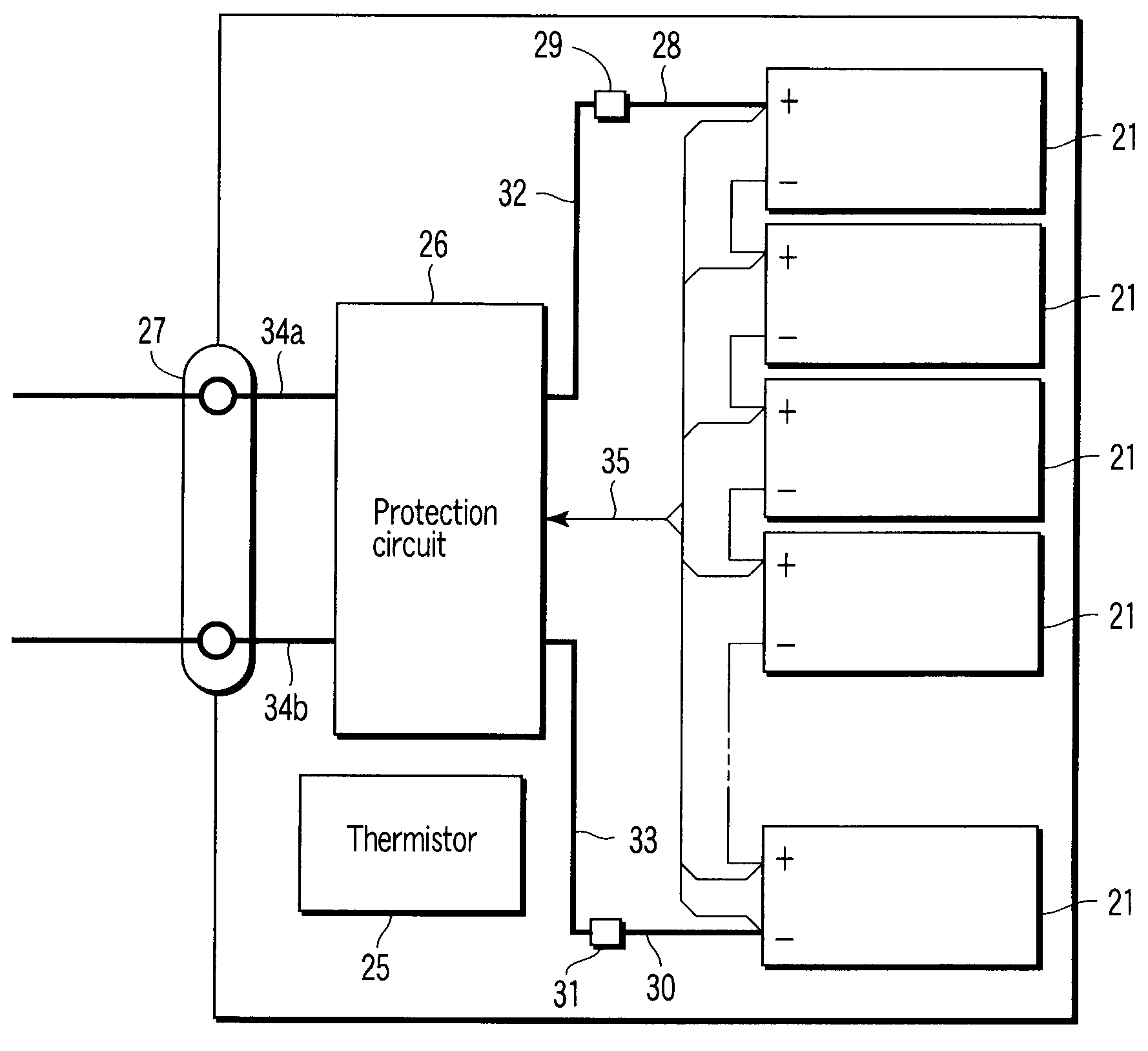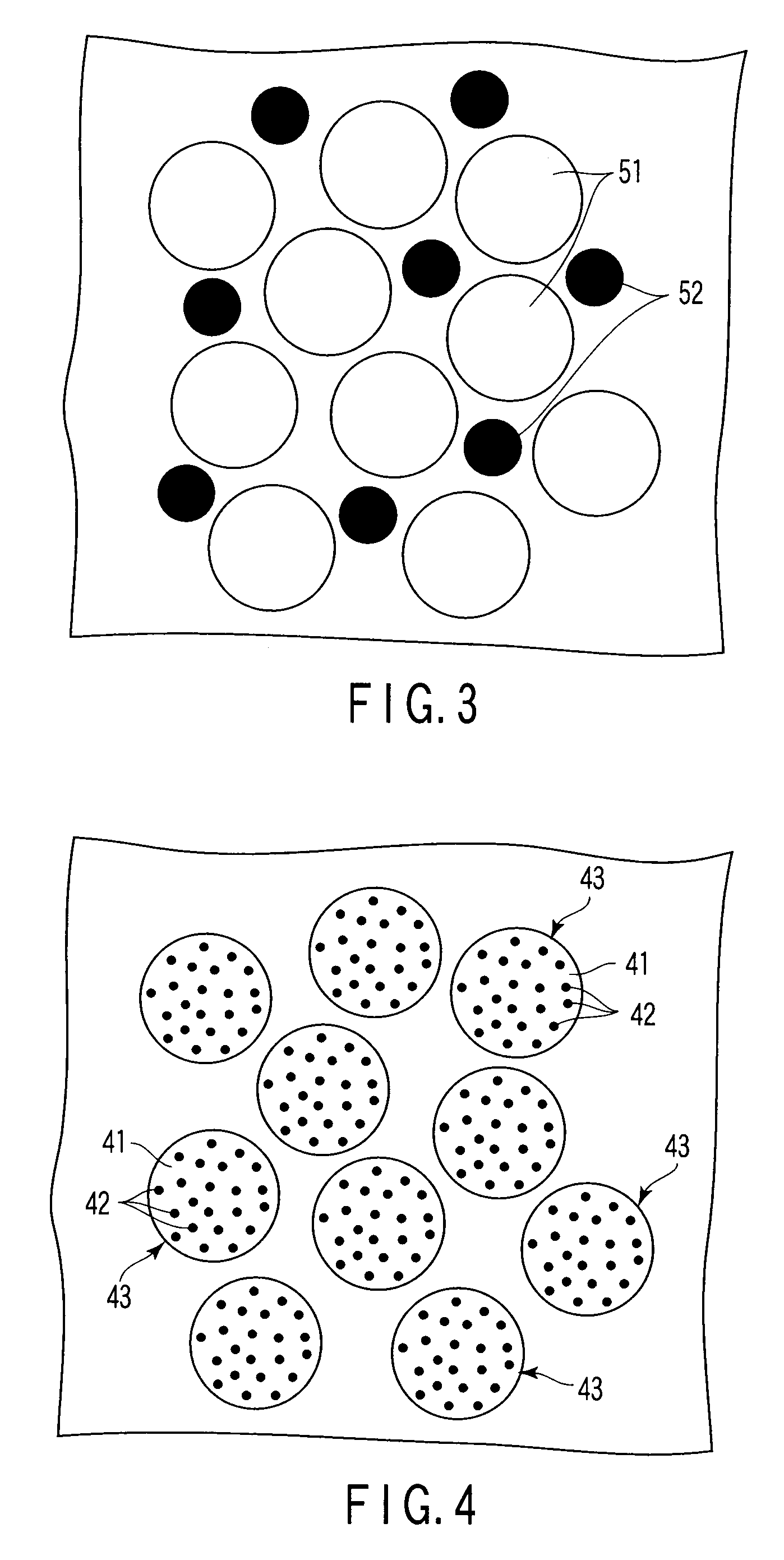Active material for battery, manufacturing method of the same, non-aqueous electrolytic battery and battery pack
a technology of active materials and batteries, which is applied in the direction of batteries, non-aqueous electrolyte cells, alkali titanates, etc., can solve the problems of deterioration of battery performance, low electronic conductivity and lithium ion conductivity of large current characteristics of battery using spinel type lithium titana
- Summary
- Abstract
- Description
- Claims
- Application Information
AI Technical Summary
Benefits of technology
Problems solved by technology
Method used
Image
Examples
example 1
Manufacture of Active Material of Negative Electrode
[0123]A predetermined quantity of lithium hydroxide was dissolved as a Li source in pure water to obtain a solution. To this solution was added titanium oxide at such a mixing ratio that the atomic ratio between lithium and titanium became 4 / 5: (1+α) [α=0.1], i.e., 4 / 5:1.1 and then the resultant mixed solution was stirred and dried to obtain powdery body. This powdery body was then subjected to primary sintering in air atmosphere at a temperature of 850° C. for 12 hours. After this primary sintering, the resultant powder was subjected to secondary sintering in hydrogen gas atmosphere at a temperature of 850° C. for one hour to manufacture a powdery active material of the negative electrode.
[0124]The powdery active material of the negative electrode thus obtained was then subjected to XRD analysis. As a result, it was possible to confirm the existence of not only a spinel type lithium titanium composite oxide phase but also a nonsto...
examples 2-6
[0136]Five kinds of active materials of the negative electrode were manufactured by repeating the same procedures as described in Example 1 excepting that the a of the atomic ratio [4 / 5:(1+α)] between lithium and titanium was variously changed on the occasion of mixing lithium hydroxide with titanium oxide in the manufacture of the powdery active material of the negative electrode which consisted of a mixed phase comprising the spinel type lithium titanium composite oxide and the nonstoichiometric titanium oxide phase. Five kinds of the non-aqueous electrolyte batteries, each constructed as that of Example 1, were assembled by following the same method as described in Example 1 excepting that these active materials of the negative electrode were employed in the manufacture of the negative electrode.
example 7
Manufacture of Active Material of Negative Electrode
[0151]A predetermined amount of lithium hydroxide was dissolved as a Li source in pure water to obtain a solution. To this solution was added titanium oxide at such a mixing ratio that the atomic ratio between lithium and titanium became 2 / 3: (1+α) [α=0.1], i.e., 2 / 3:1.1 and then the resultant mixed solution was stirred and dried to obtain powdery body. This powdery body was then subjected to primary sintering in air atmosphere at a temperature of 1050° C. for 12 hours. After this primary sintering, the resultant powder was subjected to secondary sintering in hydrogen gas atmosphere at a temperature of 1000° C. for one hour to manufacture a powdery active material of the negative electrode.
[0152]The powdery active material of the negative electrode thus obtained was then subjected to XRD analysis. As a result, it was possible to confirm the existence of not only a lithium titanium composite oxide phase of ramsdellite type structure...
PUM
| Property | Measurement | Unit |
|---|---|---|
| particle diameter | aaaaa | aaaaa |
| particle diameter | aaaaa | aaaaa |
| temperature | aaaaa | aaaaa |
Abstract
Description
Claims
Application Information
 Login to View More
Login to View More - R&D
- Intellectual Property
- Life Sciences
- Materials
- Tech Scout
- Unparalleled Data Quality
- Higher Quality Content
- 60% Fewer Hallucinations
Browse by: Latest US Patents, China's latest patents, Technical Efficacy Thesaurus, Application Domain, Technology Topic, Popular Technical Reports.
© 2025 PatSnap. All rights reserved.Legal|Privacy policy|Modern Slavery Act Transparency Statement|Sitemap|About US| Contact US: help@patsnap.com



